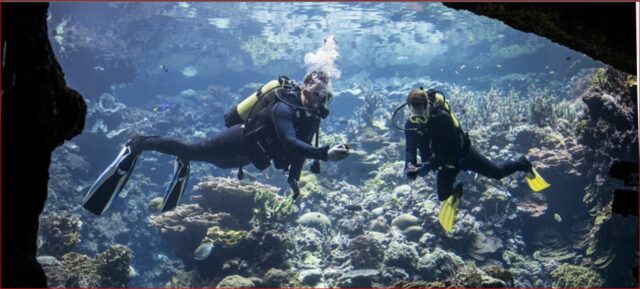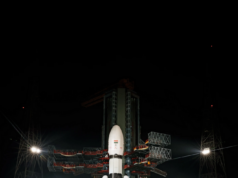ARNHEM, NETHERLANDS: Divers at Burgers’ Zoo in the Netherlands on Monday began work to create a “Noah’s Ark” of coral as part of a global effort to preserve coral reefs by building reserve populations in aquaria.
With corals under threat globally from climate change, overfishing and pollution, conservationists at Burgers’ Zoo in the city of Arnhem are creating a back-up of endangered species.
The coral could be reintroduced to its original habitat when conditions improve, said Nienke Klerks, a biologist at the zoo. “This project is making a kind of back-up of corals so in case they die out in the wild, we’ll still have them in aquaria,” Klerks said.
Because of the slow growth rates of corals – which can range from several millimetres to several centimetres a year – it would be years before any coral could be returned to the wild.
Even then, conditions would have to improve first for the coral to thrive, she added.
The zoo has worked on building the coral reserve together with the Oceanographic Museum of Monaco and two French aquaria, and Klerks hopes more zoos will join the project.
Spread over 45 hectares, Burgers’ Zoo has eco-displays, where large scale natural habitats are recreated in which animals, nature and visitor roam together. In 1988, one and a half hectares of tropical rainforest (the Bush) was opened to the public.
According to the Bergers’ Zoo website, visitors experience the humidity, dense vegetation, smells and sounds of a real jungle. It also recreates the Mexican-American rock desert (the Desert), the coral reef in the Indian Pacific Ocean (the Ocean), the plains of the savannah where the giraffes and rhinos wander (the Safari) and the Malay rainforest (the Rimba).
The largest indoor mangrove in the world, it is inspired by a nature area in Belize, which the zoo has been managing for almost three decades. In the mangrove, you can discover butterflies, manatees and many different species of crabs, it says.
(REUTERS)
In a career spanning three decades and counting, Ramananda (Ram to his friends) has been the foreign editor of The Telegraph, Outlook Magazine and the New Indian Express. He helped set up rediff.com’s editorial operations in San Jose and New York, helmed sify.com, and was the founder editor of India.com.
His work has featured in national and international publications like the Al Jazeera Centre for Studies, Global Times and Ashahi Shimbun. But his one constant over all these years, he says, has been the attempt to understand rising India’s place in the world.
He can rustle up a mean salad, his oil-less pepper chicken is to die for, and all it takes is some beer and rhythm and blues to rock his soul.
Talk to him about foreign and strategic affairs, media, South Asia, China, and of course India.





